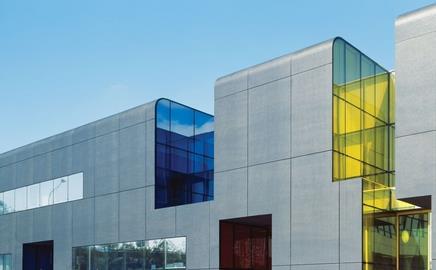║├╔½Ž╚╔·TV materials giant Lafarge operates in 70 countries around the world.
It was established in the UK in 1923 and now employs more than 4,000 people with a turnover of about ┬Ż200m. Its business covers cement production, aggregates, concrete and gypsum. Darren Williams, national specification manager, talks about the companyŌĆÖs readymix concrete business.
Describe your position in the UK market
In the readymix concrete business, Lafarge has an 11-12% market share by volume, putting it behind Cemex, Tarmac and Hanson. Among the regions itŌĆÖs strongest in the M1 corridor, the West Midlands, the Home Counties and around Leeds.
Who do you sell your products to?
Most of our products are specified either by engineers or contractors, or by architects that want a specific finish for a type of concrete.
What is the current state of the market in the UK?
It is very buoyant, particularly on inner-city projects, but there are no problems with meeting demand. The rising cost and lead times of steel are leading to an increase in the use of concrete.
What have been the most significant product developments?
We have introduced three products in the UK this year. Chronolia is a rapid-strength-gain concrete for walls, columns and beams. It gains sufficient strength to support its own weight in two-to-three hours after placement. This means formwork can be removed much sooner and there can be two formwork pours a day.
Extensia is a low-shrinkage concrete for use in groundbearing slabs, particularly for applications such as warehouses. It contains steel fibres that help prevent cracking, reduce the slab thickness, eliminate the need for steel reinforcement mesh and allow slabs measuring up to 400m2 to be cast without expansion joints.
The third product is Agilia, a self-placing, self-levelling concrete with high fluidity.
It will fill all corners and spaces in formwork or moulds and is easy to place in situations where there is dense reinforcement.
What developments can we expect in the future?
In the future, you could see a product that combines Chronolia and Agilia ŌĆō it will be easy to place and set rapidly.
In the longer term, there might be a ŌĆ£son of DuctalŌĆØ. Ductal is a fibre-reinforced concrete that has high casting fluidity to create complex forms (see picture, left). It also has high flexural strength and a compressive strength six to eight times that of traditional concrete. A ŌĆ£son of DuctalŌĆØ would be cheaper than Ductal while displaying about 75% of the strength.
What factors are having the biggest effect on your business?
Sustainability is obviously having a big impact and there is a lot of debate on the embedded energy of concrete versus steel. Cement is the biggest part of concreteŌĆÖs carbon footprint and Lafarge has set itself the target of reducing the CO2 per tonne of cement by 20% by 2010, based on 1990 levels. WeŌĆÖre up to 14% now. WeŌĆÖre achieving this by using cementitious materials such as slag, fly ash and silica fume that cuts down on the amount of limestone needed.
WeŌĆÖre also improving the efficiency of the production process by using things such as biomass and recycled oils to power the kilns used to heat the limestone, which is used to manufacture the cement, to 3,000┬░C.
Topics
Specifier 19 October 2007
- 1
- 2
- 3
- 4
- 5
- 6
- 7
- 8Currently reading
Lafarge: Strong stuff
- 9
- 10
- 11
- 12
- 13
- 14
- 15
































No comments yet